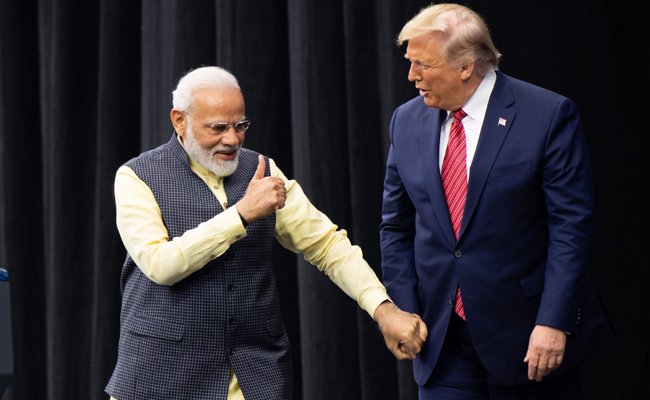
While US President Donald Trump has labelled India as a "tariff king", the claim doesn't hold up against actual trade data and global comparisons with other nations.
While India's simple average tariff is approximately 15.98 per cent, the trade-weighted average, which better reflects the duties actually applied on traded goods, is only 4.6 per cent, as per World Bank data, much lower than what is commonly believed.
Trade-weighted average tariffs measure the actual duties paid based on trade volume.
This means that most of India's high tariffs apply to sectors with low import volumes, such as agriculture or automobiles. In contrast, the bulk of US exports to India - pharmaceuticals, energy products, machinery, and chemicals - face much lower duties, typically 5-8 per cent, as per official data.
A significant portion of India's imports enter duty-free, thanks to various schemes like Special Economic Zones (SEZs), Export-Oriented Units (EOUs), and Free Trade Agreements (FTAs).
In FY 2023-24, India imported over $42.2 billion worth of goods from the US. Nearly 75 per cent of this trade came from only 100 key product categories, and most of these faced low or minimal tariffs.
For example, for crude oil and LNG, the import duty of Rs. 1.1 per tonne and 2.75 per cent accounts for 18.25 per cent of US imports to India.
In industrial machinery, a tariff of 7.5 per cent makes up 9.75 per cent of imports.
Coal, with a 5 per cent duty, contributes 8.8 per cent of imports, and medical equipment has duties between 5 per cent and 7.5 per cent, with a 4.6 per cent import share.
Aircraft and parts carry a low tariff of 2.5 per cent, constituting 3 per cent of total imports and fertilisers with a tariff ranging from 7.5 per cent to 10 per cent make up 1 per cent of imports, as per official data.
When stacked against other countries, both developed and developing, India's tariffs are far from extreme, sources say.
India's weighted average is just 4.6 per cent, which is lower than Vietnam (5.1 per cent) and Indonesia (5.7 per cent) and is nearly equal to the European Union (5 per cent).
In 1990, India's average tariff was as high as 80.9 per cent. Following economic reforms in the early 1990s, tariffs were gradually reduced, falling to 33 per cent by 1999. By 2023, India's simple average tariff dropped further to 15.98 per cent, while the trade-weighted average stood at 4.6 per cent.
India's regulatory and safety standards are generally less restrictive than those of countries like the EU, Japan, or China.
ON the other hand, the US itself imposes very high duties on several important products. These tariffs, many exceeding 100 per cent, are applied across a range of products, including dairy, agriculture, textiles, and autos, reflecting deep-rooted domestic concerns similar to those seen in countries like India.












